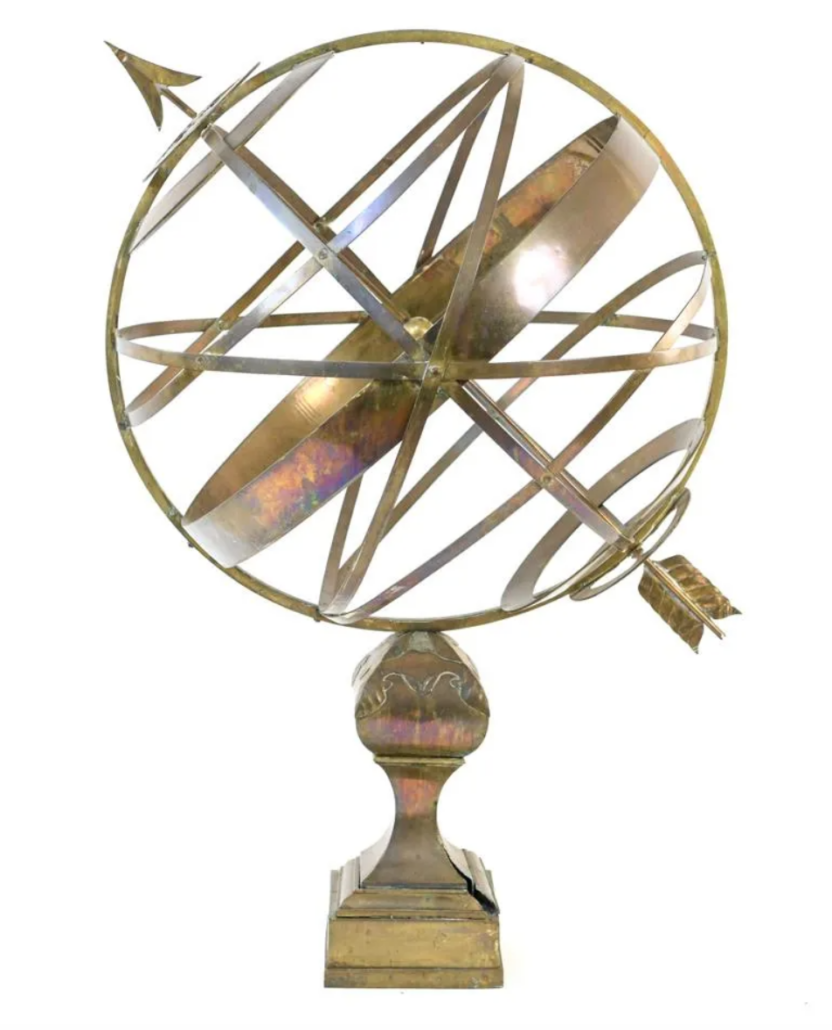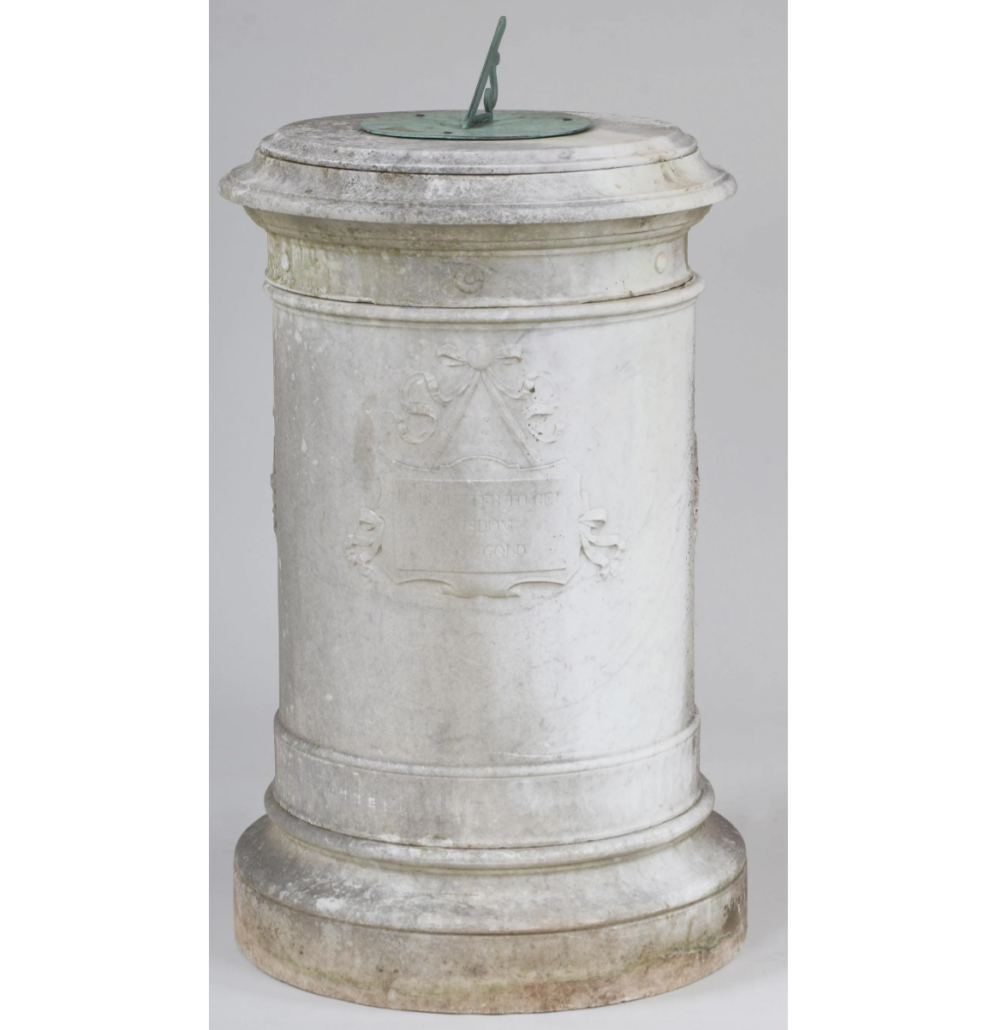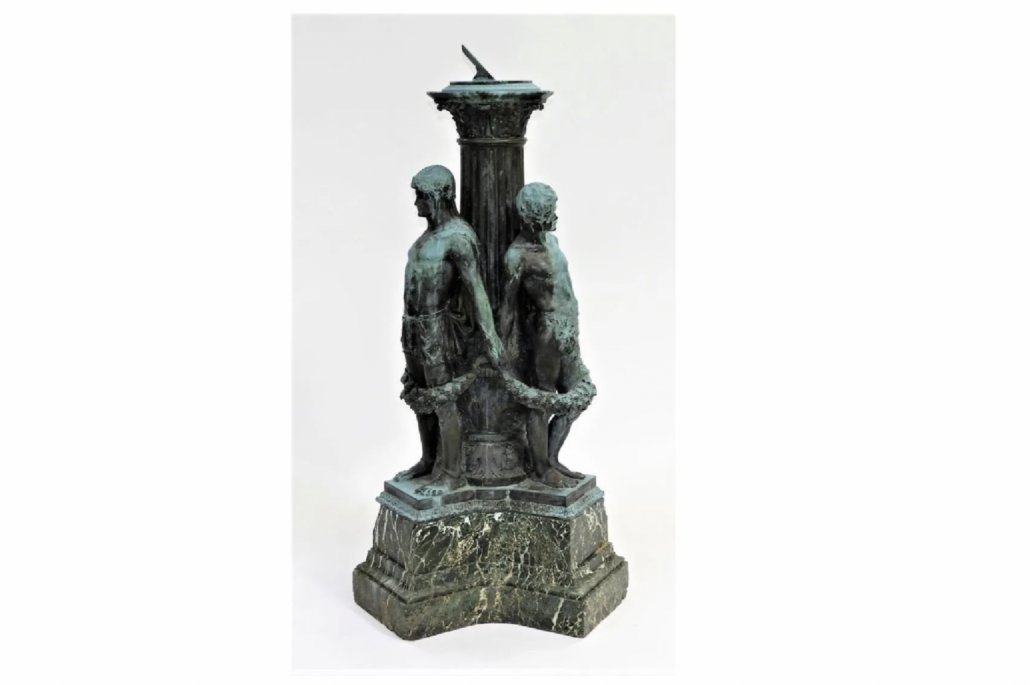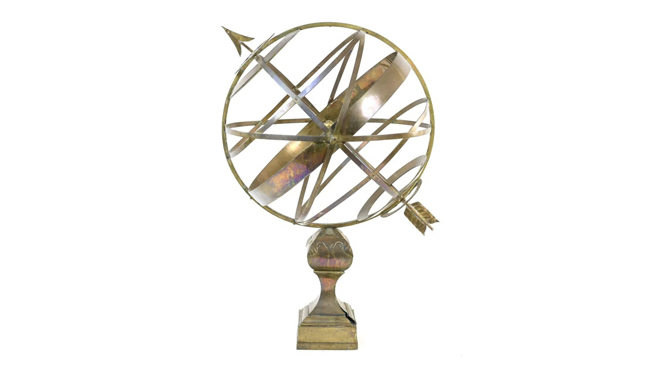
NEW YORK — Centuries before watches and cell phones took over the task of keeping track of the time, people could roughly discern the hour by looking up at the sun. Alternately, they could look down to mark the sun’s passage across the sky, which could be tracked by where it cast its shadow on the ground. This fact gave rise to the sundial, a scientific instrument that lends itself to decorative beauty and lush garden settings.
Ancient Egyptians are credited with making the earliest sundials intended to tell time. Their designs divided the day into 12-hour sections from sunrise to sunset, which could be marked off as lines on a piece of stone or marble or engraved into bronze. According to the European Association for Astronomy Education, the oldest known sundial was found in Egypt and dates to about 1,500 years BCE. It comprised two pieces of stone; one had the gnomon, which projected its shadow onto the other piece, which was carved with lines to indicate the hours, acting as a clock equipped solely with an hour hand. (“Gnomon” is a Greek term that translates to “the one that knows.”)
Sundials are typically placed on a pedestal or laid on the ground. They often have round shapes, but they can be elaborate, unusual and even whimsical. A large Korean bronze turtle depicted bearing a sundial on its back attained $70,000 plus the buyer’s premium in September 2021 at I.M. Chait Gallery/Auctioneers.

Sundials have long since been rendered obsolete by more accurate time-keeping devices, but they can and should be positioned to face true north to ensure accuracy. Today these objects are more valued as attractive design elements within the garden. A fine example of an armillary sundial is an early 19th-century Dutch copper and brass sundial that earned $3,000 plus the buyer’s premium in October 2020 at Westport Auction. Armillary sundials are said to be more accurate than the average garden sundial as they have a fixed gnomon that is aligned with the rotational axis of the planet. The surface that receives the shadows on these sundials is aligned accordingly.

The simplest antique sundials only had lines to demarcate the shape of the day, but sundial designs gained complexity as they evolved. It became common to inscribe them with numbers, and modern versions boast unnecessary but welcome flourishes and finishing touches such as a moon and stars. A 38½-in tall carved marble sundial that sold for $4,600 plus the buyer’s premium in March 2022 at South Bay Auctions has Roman numerals and fitting inscriptions on its base, such as “’Time Flies” and “Time is Precious.”
Chinese works of art often feature symbols that are regarded as auspicious. A Chinese stone sundial that earned $18,000 plus the buyer’s premium in January 2021 at Bidit Auctions had a carved stand graced with clouds. In Chinese culture, clouds signify prosperity because they bring rain, and rain created abundant harvests for those whose livelihoods depended on crops growing well. Auspicious clouds have been depicted on all manner of Chinese objects, so it makes sense that sundials, which are intended for outdoor use, would also feature this motif.

Sculptors have long fashioned works for the garden that not only endure but embrace the weathering effects of time and nature. American sculptor Anna Ladd (1878-1939) may have been better known for the masks she made for soldiers who were disfigured during World War I, but she created a few sculptures that featured the passing of time as a motif. A circa-1910 Neoclassical bronze sundial sculpture of hers realized $9,500 plus the buyer’s premium in July 2017 at Bruneau & Co. Auctioneers. “This large bronze sundial depicts three male figures holding laurel garland[s], encircling a Corinthian style column with an acanthus leaf base and capital. The different stages of life are symbolized as a youthful blindfolded boy, a strong willed soldier, and an aging philosopher,” according to the Elizabeth Street Gallery in New York City.

Sundials are well-suited for all types of gardens, from the most painstakingly ornate and formal to the flowerbeds that flank a simple cottage. Whether they rest on a pedestal in the middle of a courtyard, lie on the ground next to a sitting area, or enhance a porch wall, sundials can provide a focal point for a beloved, often-visited outdoor space.


